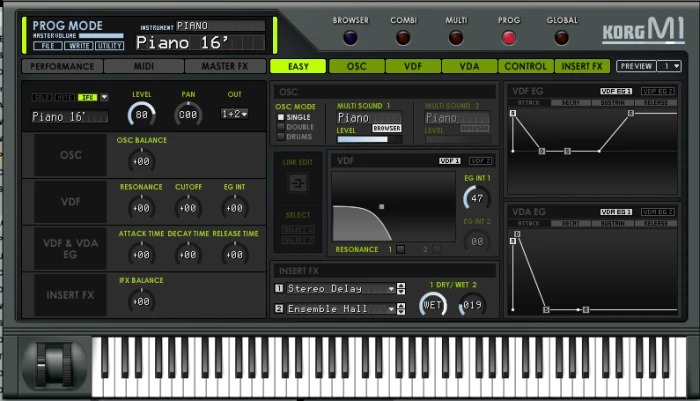How to create classic house sounds with the Korg M1 and when to use them
The return of a classic
For those who follow the ever-changing fashions of the dance scene, the four-year reign of “the EDM sound” is finally starting to fade somewhat, with a new set of styles swiftly coming to the forefront. In several of last year’s columns, I touched upon the resurgence of old-school house music, which was merely on the horizon in 2014. This year, that trend has picked up a lot of steam and genres like deep house, classic house, and a new offshoot called “future garage” are quickly becoming the focus of a new generation of producers.
As is often the case in dance music, everything old is new again with the latest incarnations of these classic sounds. Accordingly, one of the most popular synths for making modern house tracks is the Korg M1. While some producers take a purist approach, relying on vintage hardware (an M1 in good condition on eBay will set you back a paltry $700), in-the-box artists are opting for the much more affordable Legacy software from Korg, which is a mere 50 bucks as a direct download from Korg.
Whichever version of the M1 you select, the first thing to do is check out those immediately recognizable patches that are dominating the latest releases from powerhouse dance labels like Toolroom and Spinnin’ Records. Here are a few standouts that are all the rage this season. Ableton Live’s Drum Racks are so incredibly flexible for creating custom drum kits that it's a shame that many users don't dig deeper than using sampled drums with a few effects for flavor. One of the coolest things about Drum Racks is that you can put any synth on each of its pads, including third-party plug-ins.

Piano
There are quite a few flavors of piano on the M1, two are multi-sampled acoustic versions, while the others include more pad-like textures, along with some recognizable electric pianos. That said, the piano du jour for the latest house tracks is the bright and tacky “Piano16”g—patch number 01 on a hardware model. This is the source of those stabby, comped chords in recent tracks like Mark Knight’s remix of the Basement Jaxx song “Never Say Never.”
Organ
While there’s a plethora of organ sounds and variations in the M1—especially the extended collection of patches found only on the Legacy software version – purists will want to stick to the standard “Organ 1” and “Organ 2” options (presets 67 and 17 on an original unit). It’s worth noting here that “Organ 2” is the definitive bass organ sound from Robin S’s seminal house classic “Show Me Love.” Two additional organs, numbered 3 and 4, naturally, can be found on the later-issue M1EX hardware.
Horns
While there are quite a few familiar brass and reed sounds in the original M1 collection, the go-to horn patch of the house scene is preset 62, “Tenor Sax,” which appeared in quite a few ’90s house hits, but hasn’t been overdone in the modern era yet, so it’s still ripe for the picking—and I have no doubt that someone will have a major hit with it soon.
Percussion
The M1 comeback isn’t just limited to keyboard sounds. If you listen closely to some of the latest tracks coming out of the European house scene, you’ll hear that the now standard TR-909-style kits are being augmented by a few classic M1 percussion sounds. Standouts here include its crisp and bright “FingerSnap” preset (69) and the metallic and slightly ethereal “Pole” preset (19).
Get the MusicRadar Newsletter
Want all the hottest music and gear news, reviews, deals, features and more, direct to your inbox? Sign up here.
Tweaks and edits

Regardless of which M1 sounds you drop into your new house tracks, it is essential that you keep two things in mind when integrating them into your tracks. First off, the original M1 effects may not work in the context of modern production, especially if you’re using one of the organ presets for your bass sound. Savvy producers immediately attenuate or mute the effects and apply contemporary alternatives. Secondly, the M1 can be a tad flat right out of the box, so adding your favorite compressor or transient-shaping plug-in for added punch is a common trick to give these parts more presence and impact.









